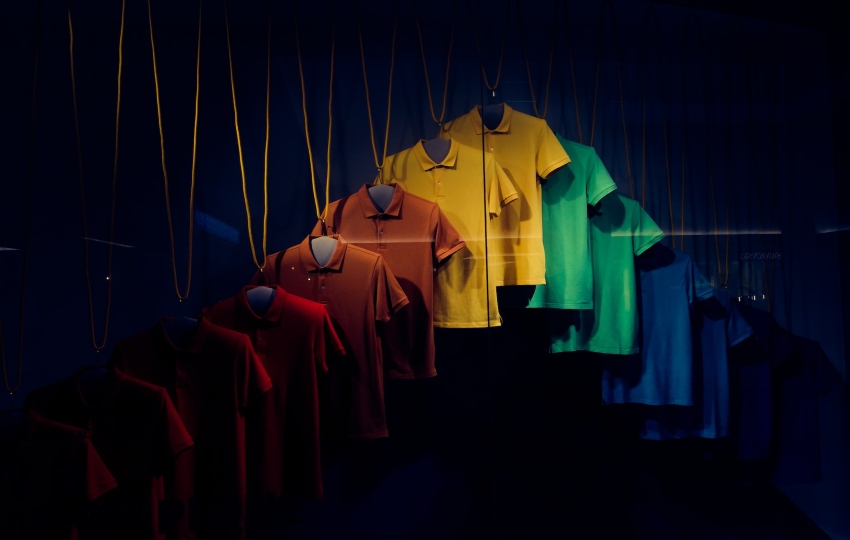The number of conscious consumers has increased worldwide. People nowadays are more aware of the environmental impact of products in the market, and the availability of green products is increasing. At the same time, research suggests that eco-conscious consumers are willing to pay extra to get them.
The fact that consumers are more environmentally conscious and knowledgeable on sustainability issues alters their buying habits. As a result, companies need to be aware of these changes in consumer behaviour to make appropriate changes in their manufacturing and marketing activities.
Let’s have a look at the characteristics of a conscious consumer and what changes fashion companies need to make to cater to their customers’ need for more sustainable products.
What Is a Conscious Consumer

A conscious consumer is someone who makes purchasing decisions with a positive social, economic, and environmental impact. In simpler words, ethical consumers, guided by their moral compasses, choose businesses that care about things like workers’ rights, animal rights, and the environment.
Many things have changed in the last few decades. New production and consumption models have emerged, making it possible to manufacture more sustainable products, including garments. As a result, businesses can make more ethical and sustainable decisions to cater to the needs of an increasing number of conscious consumers.
Why Is Ethical Consumerism Important?
Ethical consumerism is important to achieving Sustainable Development Goals (SDGs). A successful business is one that covers the needs of its customers. When there were no ethical or environmental concerns, that was easy. But now that consumers are more conscious than before, businesses must also demonstrate some ethical aspects via what we call green marketing.
85% of consumers have become greener in their purchases in recent years. At the same time, 34% are willing to pay extra for sustainable products or services. With that in mind, we understand that there is an opportunity for businesses to serve the conscious consumer market as they are willing to pay a premium.
It is not only about the associated economic benefits but also about doing good for the world and the environment. Especially with the looming climate crisis, ethical consumerism is an opportunity to adopt eco-friendly practices.
What Is the Problem With Fashion?

The problem is not with fashion per se but mostly with what we call fast fashion. Fast fashion is a business model in the fashion industry that replicates high fashion designs from recent fashion shows, mass produces them, and brings them to the market in a very short time when demand is highest. There are many well-known fashion companies that follow fast fashion models, like Zara, H&M, Primark etc.
The fashion industry is responsible for about 10% of global carbon emissions per year, with fast fashion being the largest contributor. However, it is a source of greenhouse gases and degrades the environment through synthetic materials, chemicals, water waste, and water pollution.
In a world where conscious consumers are increasing in numbers, even fast fashion companies have started introducing sustainable practices like Inditex, the biggest fast fashion group in the world.
What Fashion Companies Can Do to Become More Sustainable
To become a sustainable fashion company, you must consider all aspects of the value chain. For example, a conscious consumer does not only care about the environment. So, simply reducing your waste or missions won’t necessarily cut it. In that aspect, it would be wise to start promoting environmental conservation, restoration practices, or advancing gender pay equity.
Below are some considerations fashion brands can do to become more sustainable:
1. Maintain High Environmental and Social Standards in Facilities
Your offices or manufacturing plants are those operating daily and for many hours. Therefore, in your facilities, there is a very big opportunity to make sustainable changes with an impact. The idea is to consider using renewable energy sources like solar panels to cover your energy needs. You can ensure you are on par with all local environmental regulations. Alternatively, you can avoid toxic dyes and consider using sustainable materials like recycled and organic cotton.
2. Help Preserve Resources
Resources are not infinite, and without employing sustainable production models like the circular economy, environmental collapse and lack of resources are imminent. Conscious consumers have started demanding higher-quality fabrics in their clothes. Fashion companies can use quality and natural fabrics like wool and cotton and avoid textiles made from fossil fuels. Quality-made garments, as opposed to fast fashion, have extended lifecycles.
3. Improve Waste Management Techniques
Where there is manufacturing, waste is unavoidable. But the good thing is that sustainable practices can dramatically reduce waste. Fashion companies can systematically have training on how to reduce mistakes and fabric waste during production. Also, they need to find ways to repurpose fabric waste or sell them for cheaper when repurposing is not possible. Using eco-friendly packaging is also important, as well as garment recycling or upcycling.
4. Be Socially Responsible to Their Workers
83% of workers in the fashion industry are women. They are those who are exposed to unfair working conditions and are more vulnerable in the industry. Especially if we look towards the big brands that manufacture their clothes in Asia, the situation is bad. They work for long hours and low wages, which is the closest it can get to slave labour. And news like this does not sound good to the ears of conscious consumers.
Fashion brands must provide livable wages to their workers, humane working hours, allow break times, ensure that there are good working conditions like good ventilation and lighting and that their raw materials, like fabric, come from other ethical manufacturers.
Final Thoughts
Conscious consumers are increasing yearly, and businesses must adapt their manufacturing and marketing activities to cater to ethical concerns. This is a great opportunity for the whole world as it triggers a shift to more sustainable practices that are good for society and the environment. Fashion brands must be aware of the changing consumer behaviours and know their options to make fashion businesses more eco-friendly.
TECOFASH European project, which is funded by the Erasmus+ programme, wants to create a competitive and sustainable fashion industry in Europe.
With international and intergenerational collaboration and training, the project will try to increase the ability of professionals from SMEs and start-ups to transition their businesses to circular business models and adopt environmental and sustainable innovations. The project’s training will consider the triple bottom line of Elkington’s theory: the economic, social, and environmental, which is critical for sustainability.
Learn more about TECOFASH and its news by visiting the project’s official website.

